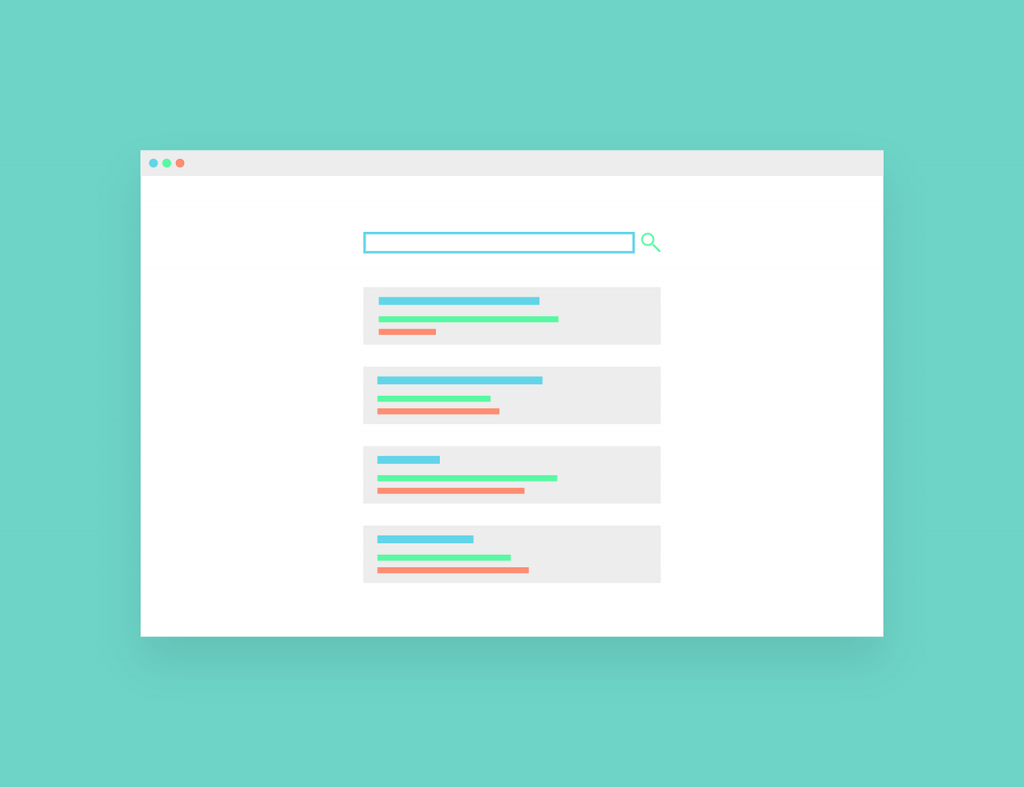Believe it or not, it’s time already to talk about SEO trends for 2022. We’re a stone’s throw away from the New Year. It brings curtains, to what was a defining year for the digital marketplace. One, where the pandemic changed the business landscape forever. Consumers worldwide spent $900 billion more on the Internet in 2020. E-commerce sales skyrocketed in the UK.
Part of this is fuelled by lockdown/ restrictions. McKinsey estimates that more than 3-quarters of buyers prefer the digital model. Forbes says that 30% of this shift could be permanent.
Well, businesses seem to have realised the potential of this shift. As a result, spending on digital advertising has increased. The SEO landscape has not been left untouched either. Local searches rose in popularity due to travel restrictions. So, if you’re an SMB, this is a great time to focus on local SEO.
The question is, what are the key trends that will define the landscape in 2022? One that’s touted to be a revival year for the business world. That’s what we are going to look at today. We have our 5 SEO trends for 2022 for you.
#1 – User experience will be more important than ever
It’s no secret that Google is doubling down on user experience (or UX). Last year they announced a ‘Page Experience Algorithm Update’. That started to roll out mid-June this year and ended in August. So if your website rankings tanked in the interim, you know now what hit you.
There aren’t any worrisome changes though. They just added more signals to the ‘Core Web Vitals’ signal. In other words, Core Web Vitals is what you should focus on. In case you are unaware of what that is, here’s some help.
What is Core Web Vitals?

Core Web Vitals are a set of factors that Google uses to determine page experience. There are three measurements to be precise. Each one of them deals with page speed and user interaction. Your website will rank better if it matches Google’s standards for these measurements. It won’t if it doesn’t. As simple as that.
Largest Contentful Paint (LCP)
This sounds more complicated than it is. LCP is the time within which the largest element on the page loads. This can be an image or a video. The benchmark to aim for is 2.5 seconds. Anything more than 4-seconds is cause for worry.
Why it matters – Closely linked with user experience. A high LCP score indicates poor page load times.
First Input Delay (FID)
The time within which the event handler in the browser processes user input. Let’s say a user clicks a button. How soon is the click processed? The benchmark to aim for is 100 milliseconds. Anything more than 300 milliseconds is poor.
Why it matters – It’s also a part of page experience. If you have a form or a download button, FID is crucial.
Cumulative Layout Shift (CLS)
Ever noticed the elements of the page shift around while it’s loading? Well, Google is cracking down on websites guilty of that. CLS is the measurement for the shifts. The benchmark to aim for is 0.1. Anything more than 0.25 needs urgent attention.
Why it matters – Google hates pages that create a poor user experience. CLS scores are generally poor on pages that have images without dimensions. Or ads.
The question is, how do you fix these? Generate a ‘Core Web Vitals’ report in Google Search Console. Your SEO team and your web developer will work in synergy to fix the problems within the report. You can track individual metrics too. Page Speed Insights will show you the LCP score.
#2 – SEO Trends for 2022 – Optimise for RankBrain

RankBrain is Google’s Artificial Intelligence and Machine Learning algorithm. Google released it in 2015. But its importance has steadily risen over the years. At one point, it was one of the top 3 ranking factors. In 2021, it still might be.
Why it matters – We know for sure that it analyses every search query and matches it with intent. It also determines the effectiveness of an algorithm update by tapping into user experience as a determining factor. It’s more important than ever to optimise with RankBrain in mind. That’s not as difficult as it sounds to be.
We have three tips for you.
Work on Relevance
A decade ago, you’d pick a juicy keyword and create a stellar article on it. Then you’d pick another, closely-related one and write one more article. Not anymore. Now, you need to do more than that. You need to cover all aspects of a keyword phrase in one article. Make it comprehensive. Make it authoritative. Ensure that it covers everything that has to do with that keyword and related keywords.
Google uses ‘Neural Matching’ to determine closely related terms and concepts. They call it the ‘Super Synonym’ concept.
Work on your Meta Title and Description
RankBrain closely analyses how many users click on your website from a search result page. So a killer article alone won’t cut it. You also need a killer title and description. One that evokes curiosity and emotions. A title that closely matches the content on the page, mind you. But one that increases ‘click-through rates’ as well.
Write Naturally
Your content team should write in a natural language that users use for search. That’s why our team at Rockstar Marketing emphasises a conversational tone for our client blog posts. Does the content read like you are talking to the user?
#3 – Optimise for Voice Searches
The best time to optimise for voice was a year ago. If you still haven’t done it, now’s the next best time. Voice searches are here to stay and are one of the key SEO trends for 2022.
Why it matters – You are not the only one who loves talking to Alexa and Siri, or Google. 48% of internet users use it already for mobile voice search. Voice shopping is touted to hit $40 billion in the US & UK in 2022.

Adobe conducted a survey that reveals that 91% of brands are investing in voice. They consider it a critical part of user experience. But for an SMB, voice may sound overreaching. That’s not the case anymore. Optimising for voice is a necessity.
Surprisingly, the rules are not too different. You optimise for ‘long tail keyword’ phrases. Use a conversational tone in the content. People generally ask questions in voice search. It pays to include relevant questions in your content too.
Ensure that your local SEO is on point. A lot of users use voice search to find businesses close to them. Get ranked for the ‘near me’ voice search queries. Do you have a Google My Business Listing? Are your name, address, and phone number (NAP) updated?
#4 – SEO Trends for 2022 – Suggested clips make video more powerful
In the I/O conference 2021, Google announced the launch of MUM or ‘Multitask United Model’, their swanky AI algorithm for Natural Language Processing. MUM replaced the older iteration of the AI algorithm called BERT (Bidirectional Encoder Representations from Transformers).
MUM is capable of analysing not just text, but videos too in 75 languages. It uses complex algorithms to accurately answer search queries. One of the signs of this is the structured video data update. We always knew videos had a good chance of ranking given that Google owns YouTube. But now it’s even better.
Why it matters – Google now shows a ‘suggested clips’ tab. This lets you highlight key moments from the video, which can make it to the top of a page for a search query. Google already showed excerpts from videos in 2019. But now, you can define each timestamp.
Let’s say you create a 25-minute video on ‘How to rank on Google in 2022’. You divide it into 7 parts. One of those parts is ‘How to build backlinks’. You can now label that specific part. Google can extract that and display it for a relevant search query. If you still haven’t done it, now’s the time to start including video in your SEO strategy.
The Rockstar Marketing SEO team has a dedicated video marketing module. We create informative and crisp videos that have an excellent chance of making it to the ‘suggested clips’ tab.
#5 – Leverage the power of Passage Ranking

Let’s face it. Some keyword phrases are impossible to rank for. No matter how hard you try, the big boys dominate these terms. But now, you may not have to try to compete against them. You can leverage the power of the ‘Passage Ranking’.
Why it matters – Google announced Passage Ranking last year. It went live in Feb 2021 and has affected 7% of search queries. A user enters a search query. Google’s machine learning algorithms use a bunch of signals and then rank an excerpt from an article that’s relevant to that specific query, as compared to the whole article.
For instance, a long-form article about ‘Linkedin ads’ can have a passage about ‘remarketing’. This can rank for a query about ‘remarketing on Linkedin’.
This is different from snippets and zero rank, mind you. As of now, there’s no clarity on the best practices for ranking for ‘passage’. All that we know is that Google’s algorithms look at some of the traditional signals. So, we recommend working on your page titles and meta descriptions.
To sum up these SEO Trends for 2022
These SEO trends for 2022 show us that Google is only expanding on the various tools it has been implementing. There’s no need to reinvent the wheel yet. Just focus on quality content, user intent, user experience, voice search, & Core Web Vitals.
In case you need any assistance understanding how these work, speak to us. Our SEO experts will be happy to assist you.



0 Comments